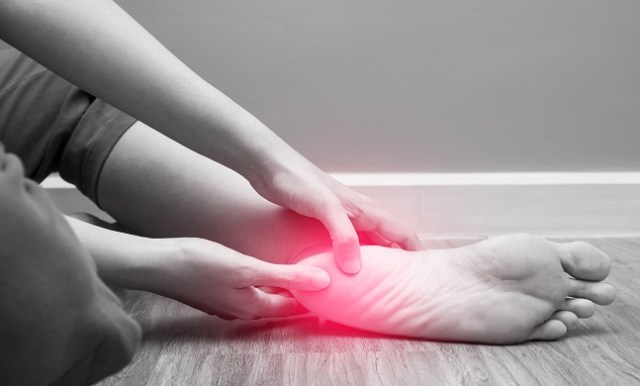Heel Pain
What is heel pain?
Heel pain is a very common condition which is faced by a vast range of people nowadays. As the name suggests, the condition is characterised by occurrence of pain in the heels. This pain can either affect the actual heel bone or the areas around it. When the pain occurs under the heel, it is termed as ‘Plantar Fasciitis’ and when it is caused behind the heel, it is known as ‘Achilles Tendinitis’.
Causes of Heel pain
- Posterior heel pain
Two common causes of heel pain are ‘traction apophysitis’ and ‘calcaneal bursitis’.
- Traction apophysitis: This condition usually occurs in boys aged about 10 years. It is not a ‘disease’ but a mild traction injury. Pain and tenderness are localized to the tendo Achillis insertion. The X-ray report usually displays increased density and fragmentation of the apophysis, but often the painless heel looks similar. The heel of the shoe should be raised a little and strenuous activities must be restricted for a few weeks.
- Calcaneal bursitis: Older girls and young women often complain of painful bumps on the back of their heels- the posterolateral portion of the calcaneum bursitis. Symptoms are worse in cold weather and while wearing high-heeled shoes (hence the use of colloquial lebels such as ‘winter heels’ and ‘pumpbumps’). Treatment should be conservative with proper attention to footwear (open-back shoes are bet) and padding of the heel. Operative treatment-removal of the bump or dorsal wedge osteotomy of the calcaneum-is feasible but the results are unpredictable. Despite the reduction in the size of the bumps, patients often continue to experience discomfort, potentially added to by an operation scar.
- Inferior heel pain
Calcaneal bone lesions: Any bone disorder in the calcaneum can present as heel pain: a stress fracture, osteomyelitis, osteoid osteoma, cyst-like lesions and paget’s disease are most likely. X-rays usually provide the diagnosis.
- Planter fasciitis
This is an annoying and painful condition that limits function. There is pain and tenderness in the sole of the foot, mostly under the heel (with standing or walking). The condition usually comes on gradually, without any clear incident or injury but sometimes there is a history of sudden increase in sporting activity, or a change of footwear, sports shoes or running surface. There may be an associated tightness of the Achiles tendon. The pain often worsens in the morning, with typical hobbling downstairs, or when first getting up from a period of sitting- the typical start-up pain and stiffness. The pain can at times be very sharp, or it may change to a persistent background ache as the patient walks about. The condition can take 18-36 months or longer to resolve, but it is generally self-limiting, given time.
- Pathology
The planter fascia or aponeurosis is a dense fibrous structure that originates from the calcaeneum, deep to the heel fat pad, and runs distally to the ball of the foot, with slips to each toe. The plantar fascia stiffens and becomes less pliable with age. The fascia is probably nor actually inflamed in this condition, at least not beyond the first week or two of onset. There may be micro-tears in the fascia, and the fascia thickens. The term ‘planter fasciitis’ is apt in some cases, as the condition is sometimes associated with inflammatory disorders such as gout, ankylosing spondylitis and reiter’s disease, in which enthesopathy is one of the defining pathological lesions.

